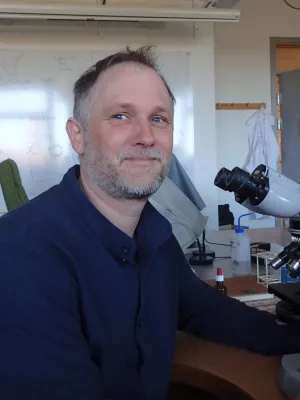
Karl Ljung
Lecturer

Recent Increased Loading of Carbonaceous Pollution from Biomass Burning in the Baltic Sea
Author
Summary, in English
Black carbon (BC), spheroidal carbonaceous particles (SCP), and polycyclic aromatic hydrocarbons (PAH) are carbonaceous pollutants affecting the climate, environment, and human health. International regulations limit their emissions, and the present emissions are followed by monitoring programs. However, the monitoring programs have limited spatio-temporal coverage and only span the last decades. We can extend the knowledge of historical emission rates by measuring pollution levels in radiometrically dated marine and lacustrine sediment sequences. Here we present measurements of BC, SCP, and PAH from a sediment sequence sampled in the Öresund strait, between Denmark and Sweden and dated back to CE 1850. Our data show a massive increase in the burial rates of all measured pollutants starting in the 1940s. The pollution deposition peaked in the 1970-1980s and declined through the 1990s. However, the declining trend was reversed in the 2000s. Source appointment of PAHs shows a relatively higher contribution of emissions from wood-burning since CE 2000. This coincides with a change towards the increased use of biomass for both municipal and regional energy production in Scandinavia. Our results demonstrate that changes in energy production have caused changes in the delivery of carbonaceous pollution to marine environments. The increase in particle emissions from wood burning is potentially posing a future environmental and health risk.
Department/s
- Quaternary Sciences
- Environmental Science
- MERGE: ModElling the Regional and Global Earth system
- Centre for Environmental and Climate Science (CEC)
Publishing year
2022
Language
English
Pages
35102-35108
Publication/Series
ACS Omega
Volume
7
Document type
Journal article
Publisher
The American Chemical Society (ACS)
Topic
- Climate Research
Keywords
- black carbon
- marine sediment
- soot
- biomass
Status
Published
Project
- Drivers and Impacts of Coastal Ocean Acidification
ISBN/ISSN/Other
- ISSN: 2470-1343

